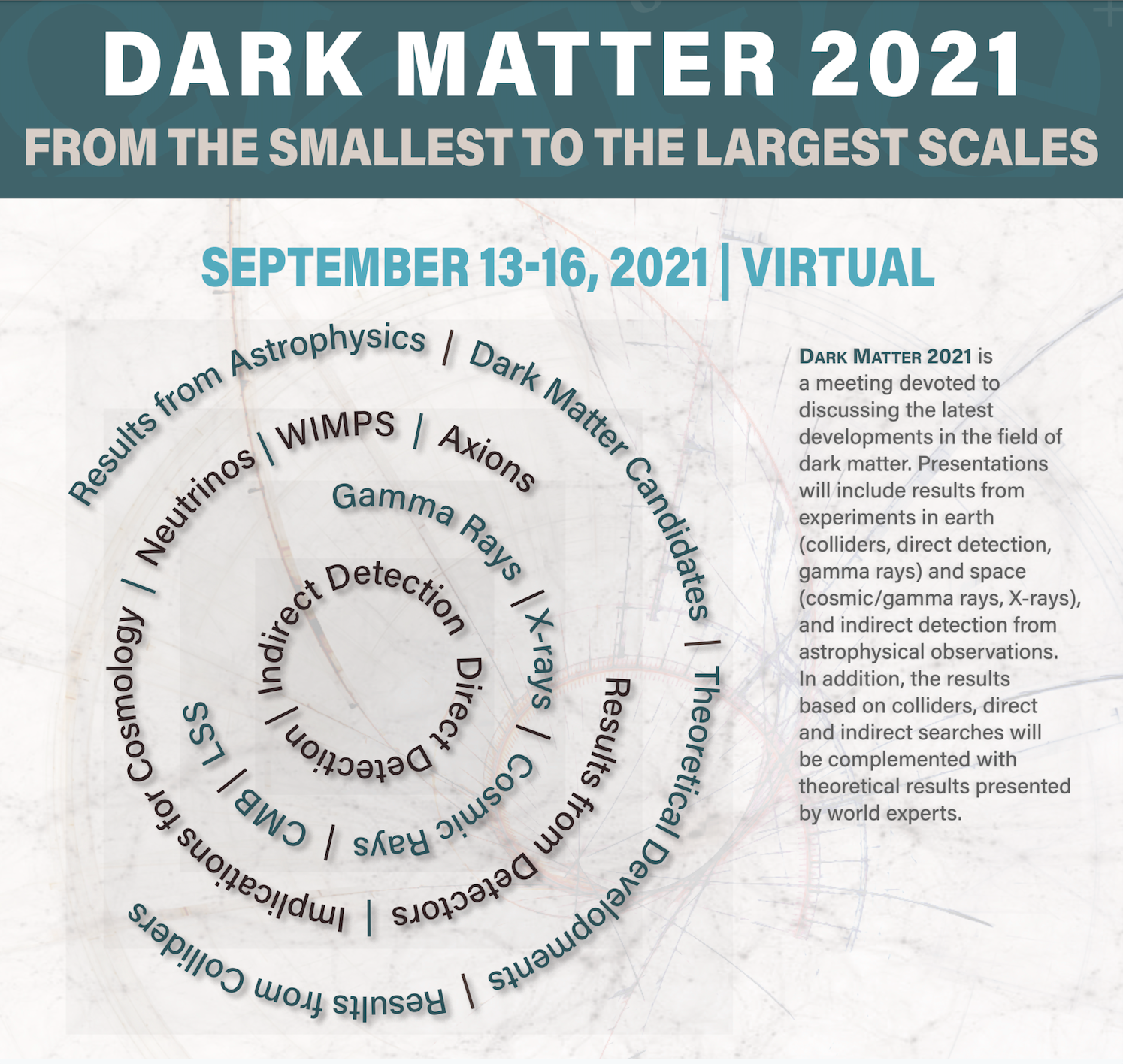
September 16, 2021
The Dark Matter 2021 virtual congress, which celebrates today the last of its sessions, has brought together more than 350 participants of different parts of the world
The congress "Dark Matter: from the smallest to the largest scales", organized by IFCA (CSIC-UC), continues searching for the keys for Dark Matter study in its third edition. Dued to the subject, the great expectation generated and the people working in this field, resulted in the most massive of all the online seminars organized by the Instituto de Física de Cantabria. The ease of access to this congress, since it does not require travelling, has attracted a large number of people interested in the subject. The attendees 'come' from all over the world, with a significant proportion of researchers from India in addition to all European countries, Brazil, the United States, Canada, China or Iran.
Dark Matter 2021 was divided in four sessions:
1. Direct search for candidate particles to Dark Matter
Section in which the experiments in underground laboratories are grouped. In them, the direct interaction of Dark Matter particles with known matter is sought in such a way that some type of signal can be had that serves to detect it.
2. Indirect search
These sessions deal with other types of data or observations (astronomical or astrophysical) in which anomalous emissions that cannot be interpreted with our current knowledge are sought. That is an indirect way of having information and evidence of the existence of Dark Matter.
3. Large particle accelerators
Sessions focused on the search via the collision of ordinary matter in large accelerators. In this case, the product of collisions that do not match the conservation of energy is monitored.
4. Cosmology
This last section deals with what has to do with our model of the Universe, explaining how in the history of the Universe the particles of the Standard Model were formed and how these exotic particles can appear.
The different sessions can be consulted on IFCA's YouTube channel.
